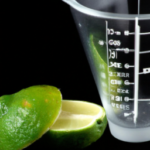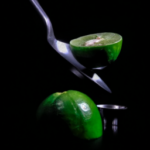Juice Tips and Tricks
How Much Lime Juice In One Lime
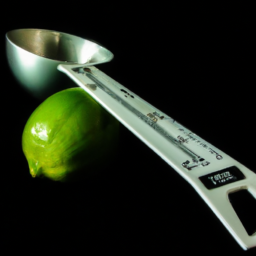
As a professional cook who loves cooking at home, I have found that lime juice is a key ingredient in many dishes. Whether it’s added to marinades or cocktails, the tangy and tart flavor of lime juice can elevate the taste of any recipe.
However, one question that often arises is how much lime juice can you expect from a single lime? The amount of juice in a lime can vary based on a few factors, such as the size of the lime, its ripeness, and the method used to extract the juice.
As someone who has squeezed countless limes over the years, I’ve learned a few tips and tricks for maximizing the amount of juice I can get from each lime. In this article, I’ll share my knowledge and experience to help you estimate how much lime juice you can expect from a single lime, as well as provide some tips for maximizing juice extraction and storing your lime juice for future use.
Key Takeaways
- Lime juice yield per fruit varies depending on the type of lime, with Persian limes producing around 2 tablespoons, Key limes producing 1-2 tablespoons, and Bearss limes producing up to 1/4 cup.
- The amount of lime juice needed in a recipe can vary based on recipe-specific requirements and personal taste preferences.
- Lime juice is an essential ingredient in many recipes, including margaritas, key lime pie, marinades, salad dressings, and salsa.
- To maximize lime juice extraction, it is helpful to choose a ripe lime, warm it up before juicing, roll it to loosen juice pockets, and use a citrus juicer or hand-held citrus reamer. Experimentation can also be key to adjusting the acidity and flavor of lime juice in a recipe.
Factors Affecting the Amount of Juice in a Lime
You’ll want to make sure you’re choosing a ripe lime if you want to get the maximum amount of juice out of it. A ripe lime will be slightly soft to the touch and give off a fragrant citrus scent. If you’re unsure, give it a gentle squeeze – a ripe lime will yield slightly.
In addition to choosing a ripe lime, having the right juicing tools can make a big difference in how much juice you can extract. A citrus juicer or a hand-held citrus reamer are both good options. These tools are designed to extract as much juice as possible while leaving behind the bitter pith.
By using a good juicing tool and a ripe lime, you’ll be able to get the most out of your citrus. Now, let’s move on to estimating the amount of lime juice.
Estimating the Amount of Lime Juice
When it comes to adding a tangy twist to your recipes, squeezing out the liquid gold from a certain green citrus fruit can do wonders. But how do you estimate the amount of lime juice you can extract from one lime? The answer isn’t as straightforward as you might think, as it can vary depending on various factors such as the type of lime and its ripeness.
However, here are some general estimates to keep in mind:
- Persian limes, which are the most common type found in grocery stores, typically yield around 2 tablespoons of juice per fruit.
- Key limes, which are smaller and more acidic than their Persian counterparts, yield around 1-2 tablespoons of juice per fruit.
- Bearss limes, which are larger and less acidic than Persian limes, can yield up to 1/4 cup of juice per fruit.
To maximize your juice extraction, it’s important to choose the right type of lime for your recipe and ensure it’s at its peak ripeness. In the next section, we’ll explore some tips for getting the most juice out of your limes.
Tips for Maximizing Juice Extraction
When it comes to extracting the maximum amount of juice from a lime, I’ve got a few tricks up my sleeve.
First, I always warm up the lime by rolling it back and forth on a hard surface with the palm of my hand. This helps to loosen up the juice inside.
Next, I cut the lime in half crosswise instead of lengthwise and use a citrus juicer to squeeze every last drop out.
By following these simple tips, you can get the most juice out of your limes and ensure that your dishes are bursting with flavor.
Warming the Lime
To extract more juice from a lime, it’s helpful to warm it up before squeezing. There are many heating techniques you can use, such as putting the lime in the microwave for a few seconds or rolling it on a countertop.
Heating the lime will help to soften the membranes inside the fruit, making it easier to extract the juice. Not only will warming the lime make it easier to squeeze, but it can also improve the flavor impact.
When a lime is at room temperature, the essential oils that give it its distinct flavor are more readily released. So, by warming up the lime beforehand, you can enhance the flavor of your lime juice.
Now that we’ve covered warming the lime, let’s move on to the next step of maximizing juice extraction: rolling the lime.
Rolling the Lime
Now that we’ve warmed up our lime, let’s move on to the next step: rolling it.
Rolling a lime before juicing it has many benefits. Here are some juicing techniques that I’ve learned over the years that make rolling the lime a crucial step in the process:
- Rolling the lime helps to loosen the juice pockets inside the fruit, making it easier to extract all the juice.
- Rolling also helps to break down the cell walls of the lime, releasing more juice and making the juice smoother and less bitter.
- By rolling the lime, you can get up to 20% more juice from it than if you were to simply cut it in half and squeeze it.
By incorporating these juicing techniques, you’re getting the most out of your lime and ensuring that you have enough juice for your recipe.
Now that we’ve rolled our lime, it’s time to move on to the next step: cutting it.
Cutting the Lime
Let’s dive into the next step of the process: cutting our zesty citrus fruit. When it comes to cutting limes, there are various techniques that can be used depending on the desired outcome. The most common method is to cut the lime in half and extract the juice using a juicing tool such as a reamer or citrus press. However, if you want to use the lime for garnish or zest, you may want to consider other cutting techniques such as slicing or wedging.
To help you visualize the different cutting techniques, here is a table outlining the steps for each method:
| Cutting Technique | Steps |
|---|---|
| Half | Cut the lime in half lengthwise |
| Slicing | Cut the lime into thin rounds |
| Wedging | Cut the lime into wedges by cutting it in half, then in half again, and so on |
Now that we have our lime cut, it’s time to move onto the next step: determining how much lime juice we will need for our recipe.
How Much Lime Juice Do You Need?
When it comes to lime juice, it’s important to know how much you need for your recipe. This can vary depending on the recipe-specific requirements and your personal taste preferences.
As someone who frequently uses lime juice in my cooking, I’ve learned the importance of adjusting the amount of juice based on these factors to ensure the perfect balance of flavors in my dishes.
Recipe-Specific Requirements
To make sure the recipe turns out just right, it’s important to know that one lime typically yields about 2 tablespoons of lime juice, so don’t forget to measure it out! Measurement accuracy is crucial when it comes to lime juice, as too much or too little can completely change the taste of your recipe. If you don’t have fresh limes on hand, lime juice substitutes such as bottled lime juice or even lemon juice can be used, but keep in mind that the taste may be slightly different.
When it comes to recipe-specific requirements, some recipes may call for more or less lime juice depending on the other ingredients. Here are some examples of recipe-specific lime juice requirements to keep in mind:
-
Margaritas typically require 1.5 ounces (or 3 tablespoons) of lime juice per serving
-
Key lime pie requires about 1/2 cup of lime juice for a standard 9-inch pie
-
Marinades for meat or fish may call for a larger amount of lime juice to help tenderize the protein
-
Salad dressings may only require a small amount of lime juice for a subtle citrus flavor
-
Salsa recipes may vary in the amount of lime juice needed depending on the desired level of acidity.
Remember, adjusting for personal taste is always an option. If you prefer a stronger lime flavor, you can add more juice accordingly.
Adjusting for Personal Taste
Adjusting for personal taste is always an option when it comes to lime juice. While some recipes may call for a specific amount, it’s important to remember that everyone’s taste buds are different. Some people may prefer a more acidic taste, while others may want a slightly sweeter flavor. Experimentation is key when it comes to adjusting the acidity and flavor of lime juice in a recipe.
To adjust the acidity of lime juice, start by adding small amounts at a time and taste-testing as you go. If you find the lime juice too tart, try adding a pinch of sugar or honey to balance out the flavors. On the other hand, if you prefer a more tangy taste, try adding a little extra lime juice. Don’t be afraid to get creative and experiment with different flavors to find the perfect balance for your personal taste.
Moving on to other uses for lime juice, it’s important to note that it’s not just a great addition to recipes. Lime juice can also be used as a natural cleaner, to freshen up your garbage disposal, and even as a natural deodorant.
So, the next time you have some extra lime juice on hand, try using it for something other than cooking or baking.
Other Uses for Lime Juice
I love using lime juice not just for cooking, but also for cleaning and deodorizing my home. It’s a natural and effective way to get rid of unpleasant odors in the kitchen, bathroom, and even my shoes!
Plus, lime juice has many health and beauty benefits that I take advantage of. It’s a great source of vitamin C and antioxidants, and can be used to brighten skin and hair.
Cleaning and Deodorizing
When life gives you limes, don’t just stop at using the juice for cooking and cocktails! Limes are a natural cleaning agent and their acidic properties make them great for deodorizing.
Cleaning lime is perfect for removing tough stains, grease, and grime. Mix equal parts lime juice and water to create a cleaning solution that can be used on surfaces like countertops, sinks, and even floors. The lime juice cuts through dirt and grime while the water dilutes it enough to make it safe for use on most surfaces.
The deodorizing properties of lime juice make it a great addition to any cleaning routine. Its fresh and citrusy scent can help mask unpleasant odors, making it perfect for use in the bathroom or kitchen. Simply mix lime juice with water and use it as a natural air freshener by spraying it around the room.
With cleaning and deodorizing properties like these, it’s no wonder why lime juice is a must-have in any household. Now, let’s move on to how it can benefit our health and beauty routines.
Health and Beauty
After cleaning and deodorizing, it’s time to talk about the health and beauty benefits of lime. As a personal assistant, I’ve seen how lime can be used in various ways to enhance one’s physical appearance.
The amount of lime juice in one lime may vary, but its benefits for the skin and hair growth are undeniable. When it comes to skincare, lime is an excellent source of vitamin C, which helps brighten the skin and reduce the appearance of dark spots. It also has natural astringent properties that can help tighten pores and reduce oil production. Moreover, lime juice can be used as a natural exfoliant, helping to remove dead skin cells and revealing brighter, smoother skin.
On the other hand, lime juice is also a great source of nutrients that can promote hair growth. Its acidic properties can help balance the pH levels of the scalp, which can lead to healthier and stronger hair growth. It can also help unclog hair follicles, promoting better blood circulation and nutrient absorption.
Here are some ways to use lime for the skin:
- Mix lime juice with honey and apply as a face mask for brighter, smoother skin.
- Use lime juice as a toner by mixing it with water and dabbing it on the face with a cotton ball.
- Add lime juice to a warm bath to help detoxify the skin and reduce body odor.
Here are some ways to use lime for hair growth:
- Mix lime juice with coconut oil and massage onto the scalp for better blood circulation and hair growth.
- Use lime juice as a hair rinse after shampooing to balance the pH levels of the scalp and promote healthy hair growth.
- Mix lime juice with henna powder to create a natural hair dye that can help strengthen and nourish the hair.
As we’ve seen, lime juice can offer numerous benefits for both the skin and hair. However, it’s also essential to note that lime juice isn’t the only citrus juice with these properties. In the next section, we’ll compare lime juice to other citrus juices to see which one is best for your health and beauty needs.
Comparing Lime Juice to Other Citrus Juices
Citrus juices like lemon and grapefruit have a more distinct flavor than lime juice. While lime juice is tangy and refreshing, it’s milder in taste compared to other citrus juices. However, this doesn’t mean that lime juice is any less beneficial or nutritious. In fact, lime juice is a great source of vitamin C and antioxidants, which are important for maintaining a healthy immune system and fighting off free radicals in the body.
When it comes to comparing lime juice to other citrus juices, it’s important to note that each type of juice has its own unique set of benefits. For example, lemon juice is known for its detoxifying properties, while grapefruit juice is high in fiber and can aid in weight loss. However, if you’re looking for a versatile citrus juice that can be used in a variety of dishes and drinks, lime juice is a great choice. Its mild flavor allows it to blend well with other ingredients, making it a popular choice in cocktails, marinades, and dressings.
Speaking of using lime juice in dishes and drinks, it’s important to know how to properly store it to maintain its freshness and flavor.
Storing Lime Juice
To ensure your lime juice stays fresh and flavorful, make sure to store it in an airtight container in the fridge. This is because lime juice is highly sensitive to air and light, which can cause it to spoil quickly.
By keeping it in a sealed container, you can prevent oxidation and preserve its freshness for a longer period. When storing lime juice, it’s also important to keep it away from other strong-smelling foods, as it can absorb their flavors and aromas.
Additionally, make sure to label your container with the date you opened it to keep track of its shelf life. With proper storage techniques, you can enjoy the zesty flavor and health benefits of lime juice for weeks to come.
Frequently Asked Questions
What are the benefits of consuming lime juice?
As a health enthusiast, I can attest to the numerous benefits of consuming lime juice. From boosting immunity to aiding digestion, this versatile fruit is a must-have in any kitchen. Its culinary uses are endless, making it a staple ingredient in many dishes.
Can lime juice be used as a natural remedy for any ailments?
As someone who has used lime juice for skincare and cleaning, I can attest to its natural healing properties. Its high vitamin C content helps brighten and tighten skin, while its acidity makes it a powerful cleaning agent.
How long does it take for a lime to ripen and produce the most juice?
As someone who has grown limes for years, I know that the ripening time can vary depending on the climate. However, waiting until the lime is fully yellow and slightly soft will produce the most juice. Juicing techniques will also affect the amount of juice extracted.
What is the nutritional value of lime juice?
As an experienced chef, I know that lime juice has numerous health benefits. It’s rich in vitamin C and antioxidants, which can boost the immune system and fight inflammation. Lime juice is a versatile ingredient in many recipes, adding a tangy and refreshing flavor to dishes.
Is it possible to extract lime juice without a juicer or citrus press?
As a seasoned cook, I can attest that hand-squeezing lime juice is possible without a juicer or citrus press. While machine-extracted juice may offer convenience, its shelf life pales in comparison to the freshness of hand-squeezed juice.
Conclusion
In my experience, the amount of juice in a lime can vary depending on several factors, such as the ripeness of the fruit, its size, and even the time of year it was harvested. However, with some practice and a few helpful tips, it’s easy to get the most out of your limes and ensure that you have enough juice for your recipes.
One helpful tip I’ve found is to roll the lime on a hard surface before cutting it – this helps to break down the pulp and release more juice. Additionally, using a citrus juicer or reaming tool can make the process even easier.
Overall, I’ve found that a single lime can typically yield around 2 tablespoons of juice, but this can vary based on the factors mentioned above. For instance, limes that are larger or riper may produce slightly more juice, while smaller or less mature ones may give less. It’s always helpful to keep in mind the question, “how much juice in a lime?” when preparing recipes that call for lime juice, as you may need to adjust the number of limes based on their size and juiciness. Using a citrus press can also help extract the maximum amount of juice from each lime.
Using lime juice in your cooking and cocktails can add a bright, refreshing flavor that is unmatched by other citrus fruits. Its tangy, zesty taste can make any dish feel like a tropical getaway, and its vibrant green color is sure to brighten up any recipe.
With these tips in mind, you can confidently incorporate lime juice into your cooking and enjoy its unique flavor and versatility. So go ahead – squeeze away and let the sunshine in!
Susannah expertise lies in researching and compiling evidence-based content on juicing, nutrition, and overall health. She is committed to ensuring that The Juicery World offers accurate, up-to-date, and trustworthy information to empower readers to take control of their health. Susannah’s goal is to inspire individuals to embrace juicing as a way to nourish their bodies and live their best lives.
Juice Tips and Tricks
How to Make Aloe Vera Juice Taste Better

Tired of the strong flavor of aloe vera juice? No problem, we’ve got the answer for you.
In this article, we’ll share some tips and tricks to make your aloe vera juice taste better. We have tried and tested various methods to enhance the flavor without compromising the health benefits.
From choosing the right juice to adding natural sweeteners and infusing with fruits and herbs, we’ve got all the information you need to transform your aloe vera juice into a delightful and refreshing beverage.
Let’s dive in!
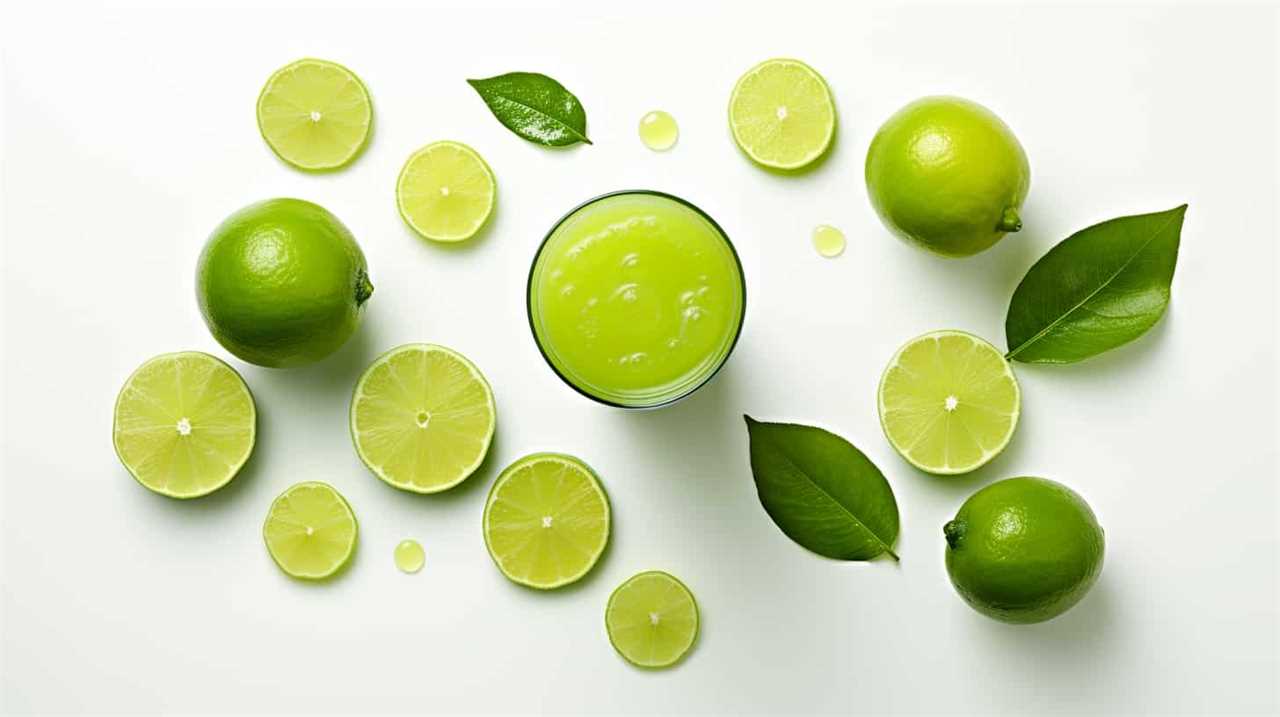
Key Takeaways
- Choose a reputable brand of aloe vera juice that prioritizes quality and uses organic, pure aloe vera.
- Avoid brands that contain added sugars or artificial ingredients.
- Use natural sweeteners like honey, agave syrup, or stevia to enhance the taste of aloe vera juice.
- Experiment with adding fruits, herbs, and other juices to create unique flavor combinations and enhance the health benefits of aloe vera juice.
Choosing the Right Aloe Vera Juice
We can enhance our experience with aloe vera juice by selecting the right brand and type for our preferences. When it comes to finding a reputable brand, it’s important to do some research and read reviews from other consumers. Look for brands that prioritize quality and use organic, pure aloe vera without any added sugars or artificial ingredients. Understanding the health benefits of aloe vera juice is also crucial in making the right choice. Aloe vera is known for its soothing properties, aiding digestion, promoting skin health, and boosting the immune system. By choosing a high-quality brand, we can ensure that we’re getting the maximum benefits from our aloe vera juice.
Now that we know how to choose the right brand, let’s move on to the next step of adding natural sweeteners.
Adding Natural Sweeteners
To enhance the flavor of our aloe vera juice, we can add natural sweeteners such as honey or agave syrup. Using alternative sweeteners not only adds sweetness but also brings unique flavors to the juice. Here are some options to consider:
- Stevia: A natural sweetener derived from the Stevia plant, it’s a zero-calorie alternative to sugar.
- Maple Syrup: This natural sweetener adds a rich and earthy flavor to the aloe vera juice.
- Dates: Pureed dates can be used to sweeten the juice while also providing essential nutrients like fiber.
In addition to using alternative sweeteners, we can enhance the flavor of aloe vera juice by adding spices and extracts. Cinnamon, ginger, or vanilla extract can add warmth and depth to the taste. By experimenting with different combinations of these natural sweeteners, spices, and extracts, we can create a flavor profile that suits our preferences.

Now, let’s move on to the next section and learn how to infuse aloe vera juice with fruits and herbs to further enhance its taste.
Infusing With Fruits and Herbs
As we explore ways to make our aloe vera juice taste better, one option to consider is infusing it with fruits and herbs. Creating unique aloe vera blends by adding fruits and herbs not only enhances the flavor but also adds a touch of freshness and complexity to the juice. For example, combining aloe vera juice with lemon, mint, or berries can create a refreshing drink that’s both delicious and packed with additional nutrients. It’s similar to the ease of making lemonade with bottled juice—quick, convenient, and customizable to suit your preferences. By experimenting with different fruit and herb combinations, you can elevate your aloe vera juice experience while still reaping its health benefits.
Fruits like strawberries, pineapple, or citrus can add a burst of sweetness, while herbs like mint, basil, or ginger can provide a subtle yet refreshing twist. Exploring the benefits of herbal infusions can also be beneficial for our health. For example, adding a few sprigs of lavender can promote relaxation and reduce stress. Additionally, infusing aloe vera juice with rosemary can aid digestion and boost the immune system.
Blending With Other Juices
Let’s try mixing aloe vera juice with different fruit juices to create delicious and refreshing blends. Blending aloe vera juice with other fruits not only enhances its taste but also adds nutritional benefits to your drink. Here are three fruit juices that you can mix with aloe vera juice:

- Orange juice: Combining aloe vera juice with orange juice not only adds a tangy flavor but also boosts your intake of vitamin C, which is essential for a strong immune system.
- Pineapple juice: Mixing aloe vera juice with pineapple juice creates a tropical blend that isn’t only refreshing but also helps in digestion. Pineapple contains bromelain, an enzyme that aids in breaking down proteins and promoting better digestion.
- Watermelon juice: Blending aloe vera juice with watermelon juice creates a hydrating and refreshing combination. Watermelon is rich in water content and contains electrolytes that can help replenish your body’s fluids.
Experimenting With Flavor Combinations
While we can try various flavor combinations with aloe vera juice, it’s important to find the right balance to enhance its taste. Experimenting with different flavors can’t only make the juice more enjoyable but also enhance its health benefits.
Aloe vera juice is known for its numerous health benefits, such as boosting digestion, promoting hydration, and supporting the immune system. By adding complementary flavors, we can create a refreshing summer drink that not only tastes great but also provides a nutritional boost.
Some popular flavor combinations include mixing aloe vera juice with citrus fruits like lemon or orange, adding a splash of coconut water for a tropical twist, or combining it with cucumber and mint for a refreshing and cooling effect.
Don’t be afraid to get creative and find the flavor combination that suits your taste buds best!
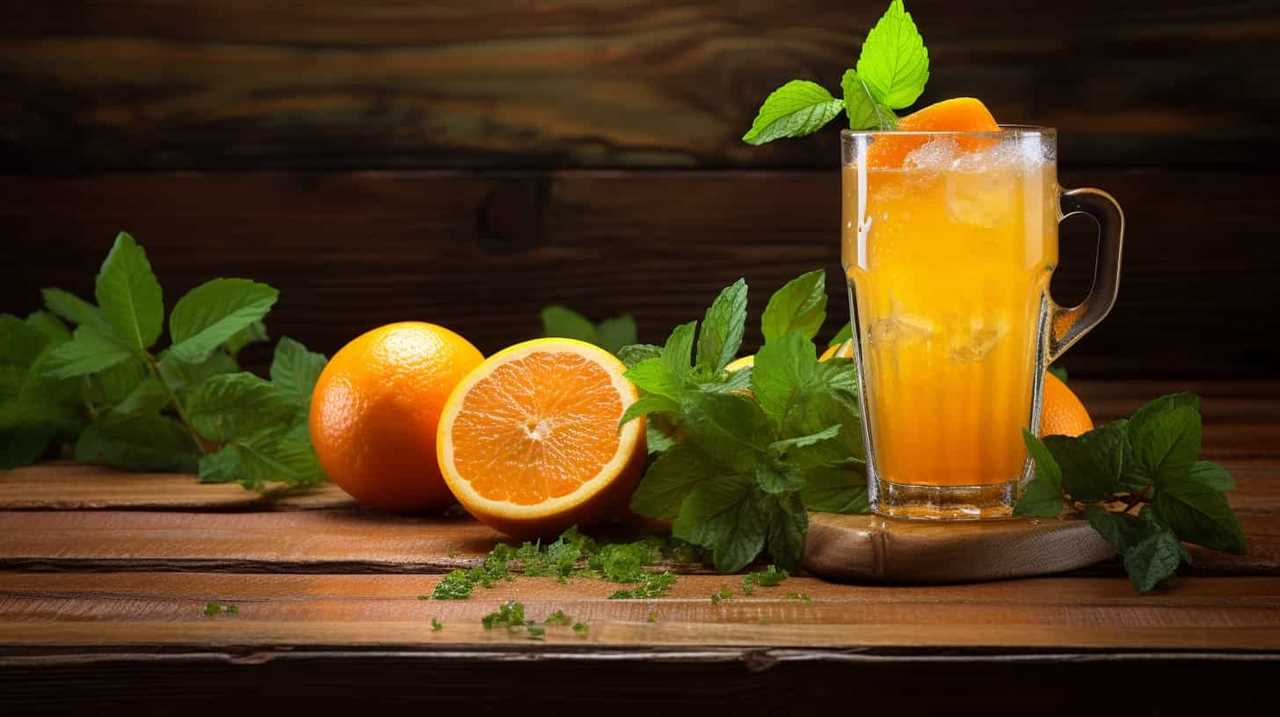
Frequently Asked Questions
Can I Use Store-Bought Aloe Vera Gel Instead of Fresh Aloe Vera for Making Juice?
Yes, you can use store-bought aloe vera gel instead of fresh aloe vera for making juice. However, it’s important to note that fresh aloe vera juice may have more health benefits due to its higher nutrient content.
How Long Can I Store Aloe Vera Juice in the Refrigerator?
Aloe vera juice can be stored in the refrigerator for up to a week. Refrigeration helps maintain the longevity and freshness of the juice, preserving its beneficial properties. It’s important to store the juice in an airtight container to prevent contamination and maintain its quality. Similarly, you might wonder *how long ginger juice lasts*; typically, fresh ginger juice can be refrigerated for about 1–2 weeks as well. Both aloe vera and ginger juices are best consumed within their shelf life to ensure maximum potency and health benefits. Additionally, freezing either juice can extend their shelf life, though some loss of nutrients and potency may occur during the process. When thinking about *how long fresh juice lasts*, it’s crucial to check for signs of spoilage, such as changes in smell, taste, or color, before consuming. To enjoy the best results, it’s always recommended to use fresh ingredients and properly store the juice to ensure you’re getting the most out of its health benefits.
Can Aloe Vera Juice Help With Digestive Issues?
Aloe vera juice can potentially help with digestive issues when taken in appropriate dosages. However, it is important to note that there may be potential side effects. It is always best to consult with a healthcare professional before starting any new supplement regimen.
Can I Use Artificial Sweeteners Instead of Natural Sweeteners in My Aloe Vera Juice?
Using artificial sweeteners in aloe vera juice may affect its taste and potential health benefits. However, natural sweeteners like honey or stevia can enhance the flavor without compromising its nutritional value.

Is It Safe to Drink Aloe Vera Juice Every Day?
Drinking aloe vera juice daily can have numerous benefits, such as improving digestion and boosting the immune system. However, consuming it regularly may also lead to potential side effects like diarrhea or stomach cramps.
Conclusion
In conclusion, making aloe vera juice taste better is easy and enjoyable.
By choosing the right aloe vera juice and adding natural sweeteners, infusing with fruits and herbs, blending with other juices, and experimenting with flavor combinations, you can create a delightful and refreshing drink.
So go ahead and unleash your creativity in the kitchen, and transform your aloe vera juice into a sensational elixir that will transport your taste buds to paradise.

Susannah expertise lies in researching and compiling evidence-based content on juicing, nutrition, and overall health. She is committed to ensuring that The Juicery World offers accurate, up-to-date, and trustworthy information to empower readers to take control of their health. Susannah’s goal is to inspire individuals to embrace juicing as a way to nourish their bodies and live their best lives.
Juice Tips and Tricks
How to Make a Glass of Lemonade With Bottled Lemon Juice

Are you craving a cool glass of lemonade to quench your thirst? Look no further! Try out our perfect recipe using bottled lemon juice that will surely please your taste buds.
In this article, we’ll guide you through the process of creating a tangy and sweet concoction that will leave you feeling refreshed and satisfied.
So grab your ingredients and let’s get started on this delightful journey of serving ourselves and others a glass of pure lemony goodness.
Key Takeaways
- Consider the storage of the bottled lemon juice (dark glass or plastic bottles, protect from light exposure, check expiration date)
- Choose a suitable pitcher and fresh lemons for enhanced flavor
- Store the lemonade concentrate in the refrigerator to maintain freshness
- Adjust the sweetness and tartness to taste with sugar or more lemon juice, and experiment with different sweeteners or additional flavors.
Choosing the Right Bottled Lemon Juice
What are the key factors we should consider when selecting the right bottled lemon juice for our lemonade?

One important factor is how the lemon juice is stored. Look for bottles that are made of dark glass or plastic, as they help protect the juice from light exposure, which can degrade its quality. It’s also important to check the expiration date to ensure freshness.
Another benefit of using bottled lemon juice is convenience. It saves time and effort compared to squeezing fresh lemons. Additionally, bottled lemon juice provides consistent flavor, as the acidity levels are standardized.
When selecting a brand, consider reading reviews and checking for certifications, such as organic or non-GMO.
Gathering the Necessary Ingredients and Tools
How can we gather all the necessary ingredients and tools to make a glass of lemonade with bottled lemon juice? First, we’ll need to collect bottled lemon juice, sugar, and cold water, as well as a pitcher and a spoon for mixing. If you prefer extra flavor, you can also gather ice and optional add-ins like mint or soda water. While preparing the lemonade, it’s easy to understand why some people wonder about other citrus drinks and may ask, “how many oranges per gallon” are needed when making orange juice instead. Once everything is assembled, combine the lemon juice, sugar, and water in the pitcher, stirring until the sugar dissolves. Feel free to adjust the sweetness or tartness to your liking, and don’t forget to add ice or any optional add-ins for an extra refreshing touch. This process might even make you curious about how much juice from oranges is needed when making fresh orange juice compared to using bottled citrus products. Once your lemonade is ready, pour it into a glass and enjoy the refreshing taste. This simple recipe can inspire you to try other homemade juices, such as learning **how to make pear juice** or experimenting with other fruit combinations. Whether you’re using fresh fruits or bottled options, creating your own beverages is a fun and rewarding way to personalize your drinks.
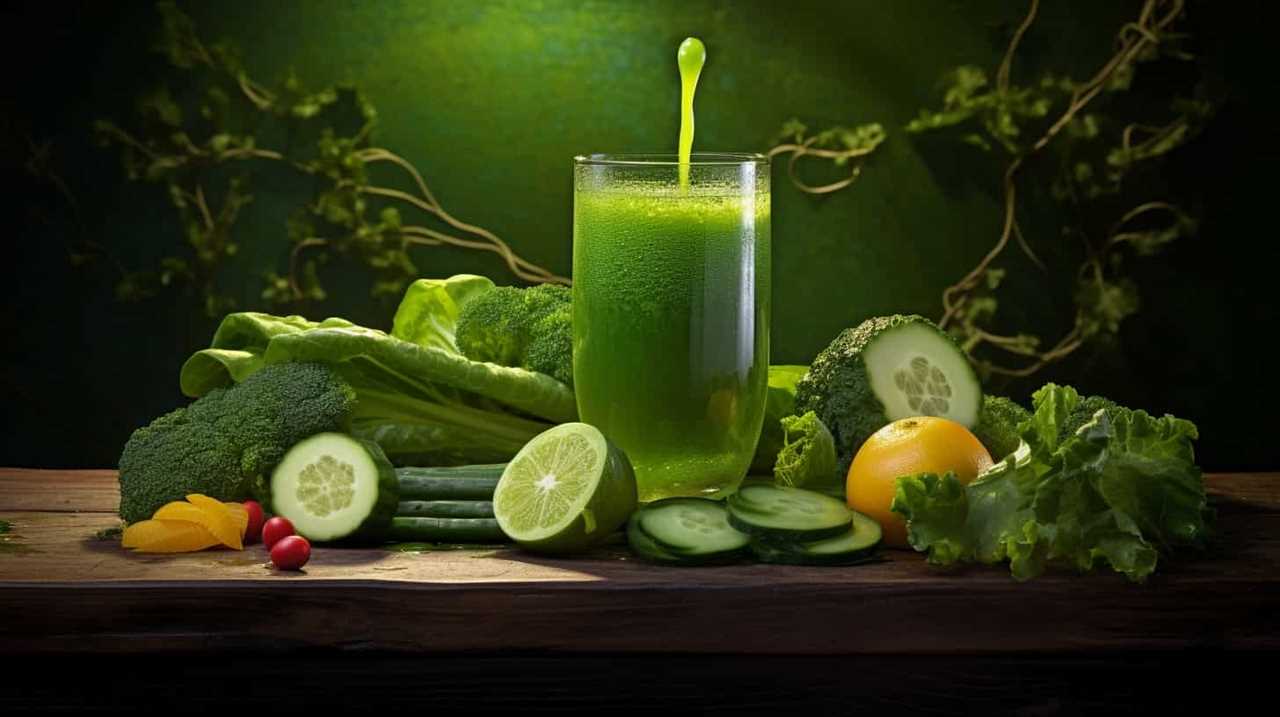
It’s important to start with the right pitcher. Look for a pitcher that’s made of glass or BPA-free plastic, as these materials won’t affect the taste of the lemonade. The pitcher should also have a lid or cover to keep the lemonade fresh and prevent spills.
Now, let’s talk about the lemons. While bottled lemon juice is convenient, using fresh lemons instead can elevate the flavor of your lemonade. Choose lemons that are firm and have a bright yellow color. Give them a gentle squeeze to ensure they’re juicy. To extract the juice, you’ll need a citrus juicer or a reamer. These tools make it easy to get every last drop of juice from the lemons.
Mixing the Lemonade Concentrate
To start mixing the lemonade concentrate, we’ll slowly pour the bottled lemon juice into the pitcher. It’s important to choose the right container for the lemonade concentrate. A pitcher with a lid or a tightly sealed container will help maintain the freshness and prevent any spills or leaks. Once the lemon juice is in the pitcher, we can move on to the next step of adding water and sweetener.
To ensure the lemonade concentrate stays fresh, it’s essential to store it properly. Keep the pitcher in the refrigerator to maintain its cool temperature and prevent any bacteria growth. If you have any leftover concentrate, transfer it to a smaller container with an airtight lid before refrigerating. This will help retain its flavor and prevent any contamination.

Now that we’ve mixed the lemonade concentrate, it’s time to adjust the sweetness and tartness to taste.
Adjusting the Sweetness and Tartness to Taste
We can adjust the sweetness and tartness of the lemonade to taste by adding more sugar or lemon juice, respectively. If you prefer a sweeter lemonade, simply add more sugar and stir until it dissolves completely. You can experiment with different sweeteners such as honey or agave syrup to find the perfect balance of sweetness.
On the other hand, if you want a tangier lemonade, add more lemon juice gradually, tasting as you go until it reaches your desired level of tartness.
Additionally, you can get creative with your lemonade by adding flavors like fresh mint leaves or a hint of lavender. These additions can elevate the flavor profile and create a more refreshing and unique experience.

Now that we’ve adjusted the sweetness and tartness of our lemonade, let’s move on to serving and enjoying your refreshing glass of lemonade.
Serving and Enjoying Your Refreshing Glass of Lemonade
Now let’s sit back, relax, and savor our refreshing glass of lemonade.
When it comes to serving and enjoying this delightful drink, there are a few techniques and garnishing options to consider.
Firstly, serving your lemonade chilled is essential for maximum enjoyment. Ensure that you have chilled glasses or add ice cubes to the glasses before pouring the lemonade.

To add a touch of elegance, you can garnish your lemonade with a slice of lemon on the rim of the glass. For an extra burst of flavor, you could also add a sprig of fresh mint or a few berries.
Remember to gently stir the lemonade before serving to evenly distribute the flavors.
Now, take a sip, feel the refreshing tang of lemon, and let the sweet and tart flavors dance on your taste buds.
Cheers!
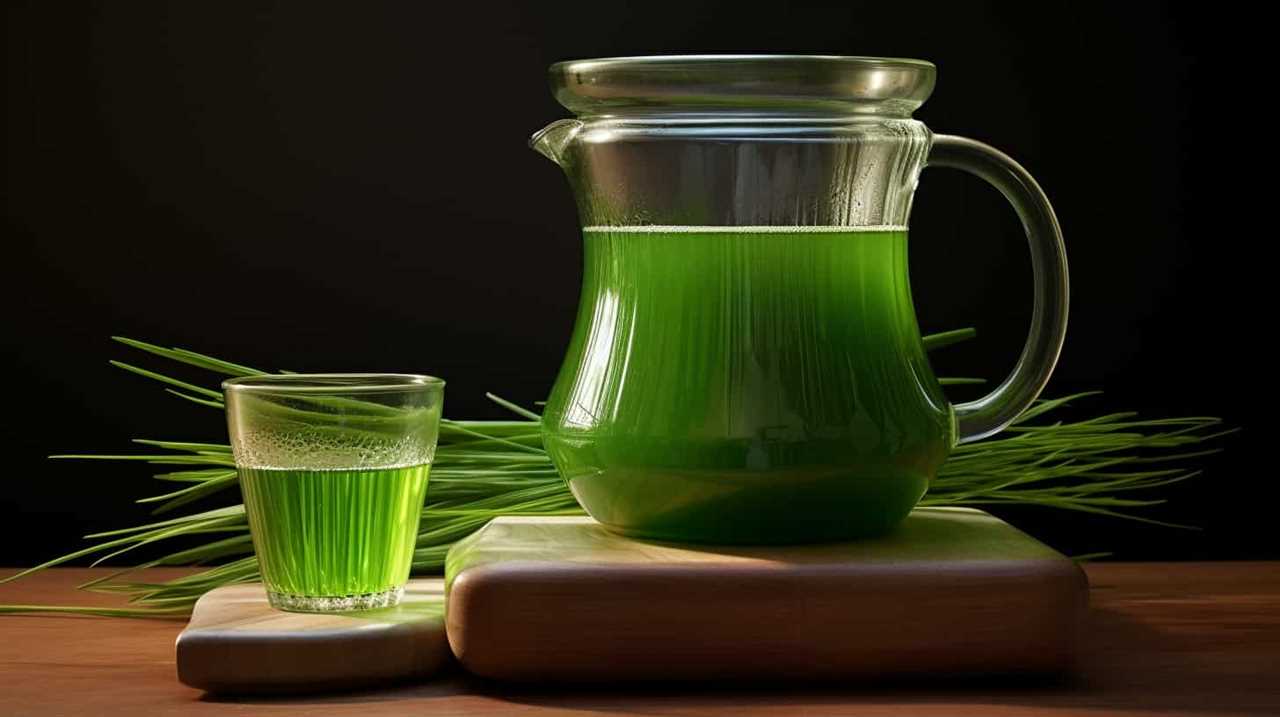
Frequently Asked Questions
Can I Use Fresh Lemons Instead of Bottled Lemon Juice?
Fresh lemons offer numerous benefits over bottled lemon juice. The taste of fresh lemons is unparalleled, providing a vibrant and tangy flavor. Incorporating fresh lemons into your lemonade will elevate its taste and give it a refreshing and authentic twist.
Can I Substitute Sugar With a Different Sweetener?
Substituting sweeteners in lemonade can enhance the flavor and offer health benefits. We’re knowledgeable about alternative sweeteners and can provide precise, detailed instructions on using them in place of sugar.
How Long Does the Lemonade Concentrate Need to Chill in the Refrigerator?
The chilling time for the lemonade concentrate in the refrigerator is typically around 1-2 hours. Using bottled lemon juice offers the benefit of convenience and consistent flavor for a refreshing glass of lemonade.
Can I Add Other Fruits or Flavors to the Lemonade?
Sure, we can definitely add different fruits or flavors to our lemonade. It’s a great way to experiment with unique flavors and create refreshing, personalized drinks. The possibilities are endless!

How Long Does the Lemonade Stay Fresh in the Refrigerator?
Lemonade made with bottled lemon juice can stay fresh in the refrigerator for about 5-7 days. To maximize shelf life, store it in an airtight container and keep it chilled.
Conclusion
And so, with a few simple steps and the right ingredients, a glass of refreshing lemonade is born.
Like a symphony of flavors dancing on your taste buds, this tangy elixir quenches thirst and brings joy on a hot summer day.
Just a sip transports you to a world of citrusy delight, where the sweetness and tartness blend harmoniously.

So go ahead, indulge in the art of lemonade-making and savor every drop of this sun-kissed nectar.
Cheers to the perfect glass of lemonade!
Susannah expertise lies in researching and compiling evidence-based content on juicing, nutrition, and overall health. She is committed to ensuring that The Juicery World offers accurate, up-to-date, and trustworthy information to empower readers to take control of their health. Susannah’s goal is to inspire individuals to embrace juicing as a way to nourish their bodies and live their best lives.
Juice Tips and Tricks
How to Know if Orange Juice Is Bad

We’ve all been in that situation before – reaching for a glass of orange juice and hesitating, unsure if it’s still okay to drink. Fear not! This article will give you the knowledge you need to determine for sure if your orange juice is still fresh or if it’s gone bad.
With a blend of scientific precision and practical tips, we’ll explore color changes, strange smells, off taste, texture changes, and mold or growth that may indicate spoilage.
Let’s dive in and serve ourselves a refreshing glass of certainty!
Key Takeaways
- Color changes in orange juice can indicate a loss of freshness and shelf life extension, but it doesn’t necessarily mean the juice is bad.
- Unusual or off-putting odors in orange juice, such as sour or fermented scents, can be a sign of poor quality.
- An off taste in orange juice, such as sour, bitter, or fermented flavors, suggests that the juice is spoiled.
- Texture changes in orange juice, such as pulp separation or a thicker consistency, can occur as the juice ages, so it’s important to consume it before the expiration date.
Color Changes in Orange Juice
We should be aware that color changes can indicate whether orange juice is bad.

When it comes to orange juice, color is a crucial factor to consider. As oranges are exposed to air, an oxidation process occurs, which leads to changes in color. Fresh orange juice has a vibrant orange hue, indicating its freshness and high nutritional value.
However, as time passes, the juice may undergo a color change, turning dull or brownish. This change in color is a result of the oxidation process, which affects the flavor and quality of the juice. It’s important to note that while a change in color doesn’t necessarily mean the juice is bad, it does indicate that the juice is losing its freshness and shelf life extension.
Therefore, it’s advisable to consume orange juice when it’s at its freshest, as indicated by its vibrant orange color.
Strange Smells in Orange Juice
When it comes to evaluating orange juice, we should be cautious of any strange smells or odors. A fresh, pleasant smell is indicative of good quality orange juice. However, if you notice any unusual or off-putting odors, it may be a sign that the juice has gone bad. These smells can range from a sour or fermented scent to a rancid or moldy aroma.

It’s important to note that while some natural variations in scent can occur due to the specific variety of oranges used, any strong or unpleasant smells should raise concerns. If you have citrus fruit allergies, it’s especially important to pay attention to the smell of orange juice, as it could indicate the presence of spoilage or contamination.
Ensuring the quality of orange juice is essential as it’s a popular beverage known for its health benefits, including being rich in vitamin C and antioxidants.
Off Taste of Orange Juice
Our taste buds can detect even the slightest hint of an off taste in orange juice, which can indicate that it has gone bad. The taste of orange juice should be fresh, tangy, and slightly sweet. If it tastes sour, bitter, or fermented, it’s likely spoiled.
One common cause of an off taste in orange juice is the use of overripe oranges. When oranges become overripe, their flavor profile changes, resulting in a less pleasant taste. Another factor to consider is the expiration date. Orange juice that has passed its expiration date is more likely to develop an off taste. It’s important to check the expiration date before consuming orange juice to ensure its freshness and quality. Additionally, improper storage conditions, such as leaving the juice at room temperature for extended periods, can lead to the development of unpleasant flavors. Storing orange juice in the refrigerator helps maintain its freshness for longer. For those exploring different juice options, aloe vera juice flavor tips suggest pairing tart juices with milder flavors to balance the overall taste.
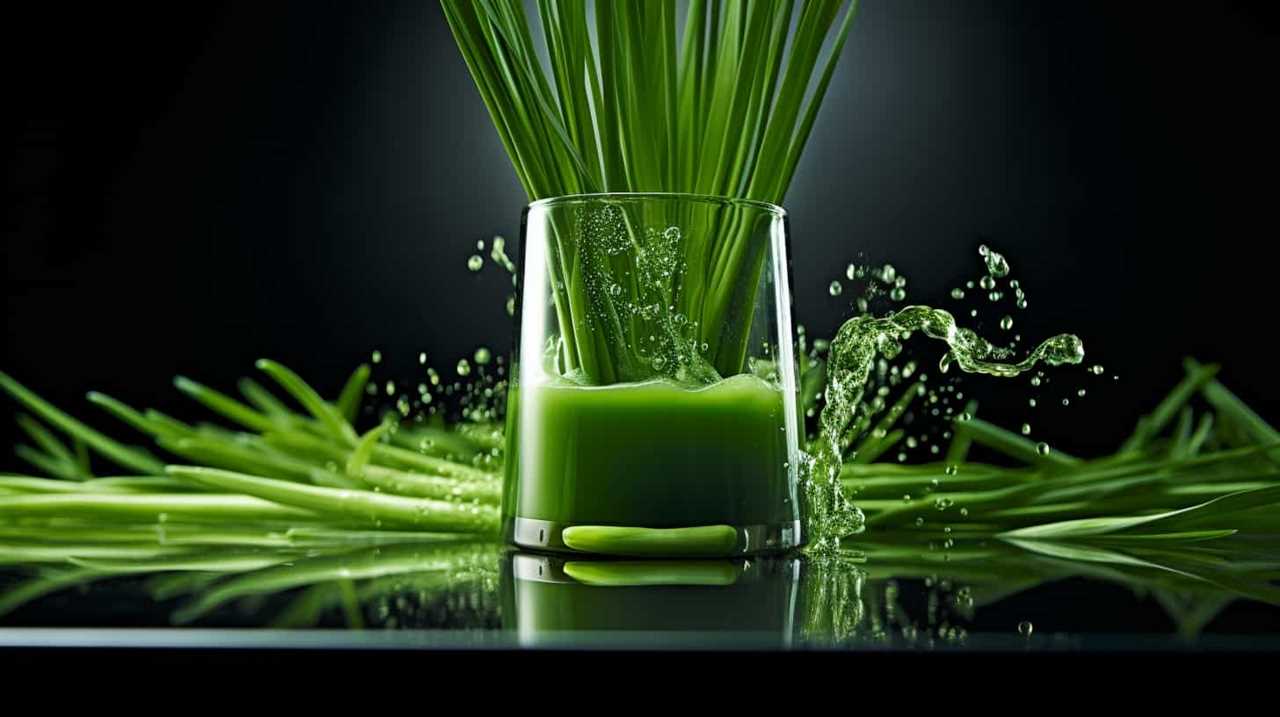
Now, let’s move on to discuss the texture changes in orange juice.
Texture Changes in Orange Juice
As we explore the texture changes in orange juice, it’s important to note that certain factors can cause it to become thicker or develop sediment. One common texture change in orange juice is pulp separation, where the pulp separates from the liquid and settles at the bottom. This can occur naturally over time, as the pulp particles become denser and sink.
Another factor that can affect the texture of orange juice is the expiration date. As orange juice ages, it may start to develop a thicker consistency and even form sediment. This is a result of the natural breakdown of the juice’s components. Therefore, it’s crucial to check the expiration date on orange juice and consume it before it reaches its expiration date to avoid any undesirable texture changes.
Mold or Growth in Orange Juice
We need to be aware of the possibility of mold or other growth occurring in orange juice. Mold can develop in orange juice if it isn’t stored properly or if it has passed its expiration date.
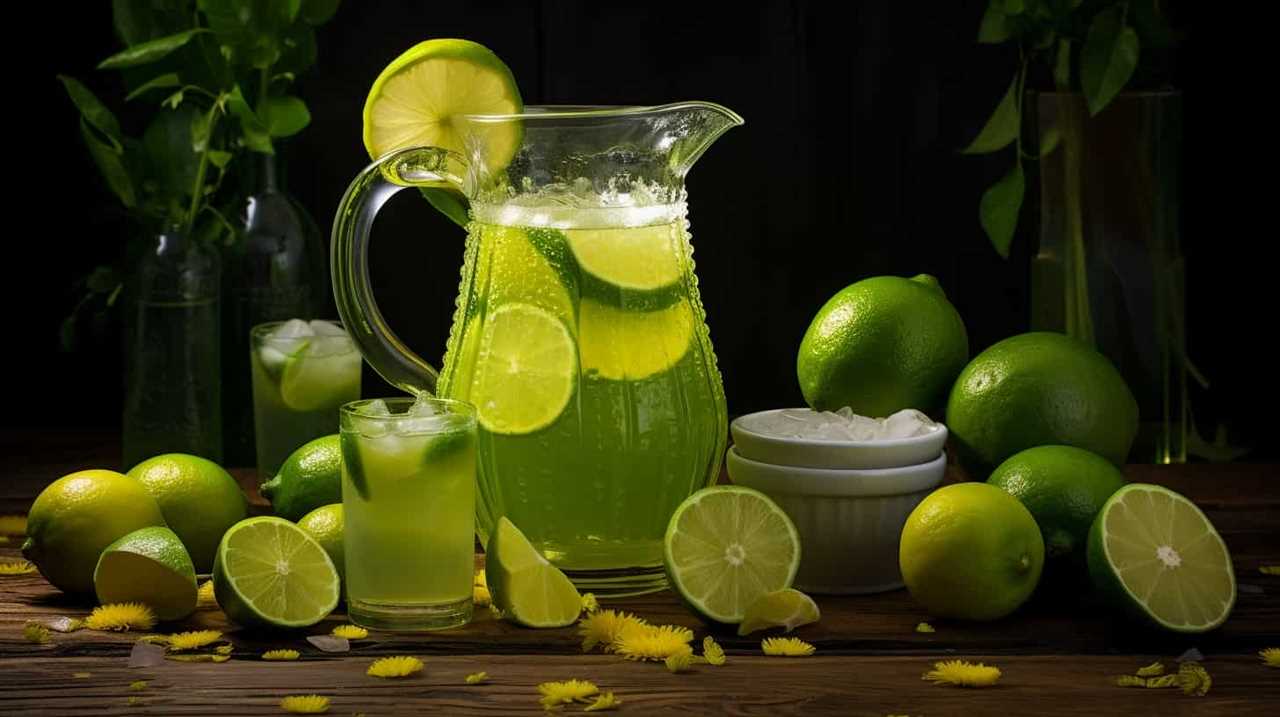
To prevent mold growth, it’s important to follow these steps:
- Store orange juice in the refrigerator at a temperature below 40°F (4°C).
- Check the expiration date on the bottle before consuming. Discard any orange juice that has expired.
- Keep the container tightly sealed to prevent air and moisture from entering, as these can promote mold growth.
Regularly inspecting orange juice for any signs of mold or unusual growth is essential. If you notice any discoloration, a strange odor, or visible mold, it’s best to discard the juice to avoid any potential health risks.
Frequently Asked Questions
Can Orange Juice Go Bad if It’s Stored in the Freezer for Too Long?
Frozen orange juice can potentially lose its nutrients and change its taste if stored in the freezer for too long. It is important to check for signs of spoilage before consuming it.
How Long Can Orange Juice Stay Fresh in the Refrigerator Once It’s Opened?
Once opened, orange juice can stay fresh in the refrigerator for about 7-10 days. To maintain its freshness, store it properly by keeping it tightly sealed and at a consistently cold temperature. If the orange juice develops an off odor, flavor, or appearance, it’s best to discard it to avoid any potential health risks. Factors like exposure to air and varying temperatures can influence how long orange juice lasts, so it’s crucial to handle it with care. Always check the expiration date as a general guide, but remember that proper storage can extend its freshness slightly. Additionally, avoid leaving the orange juice out at room temperature for extended periods, as this can significantly shorten how long orange juice lasts. Freezing the juice can be another option to extend its shelf life, but be aware that this may alter its texture and taste once thawed. By following these precautions, you can ensure your orange juice stays fresh and safe to consume.
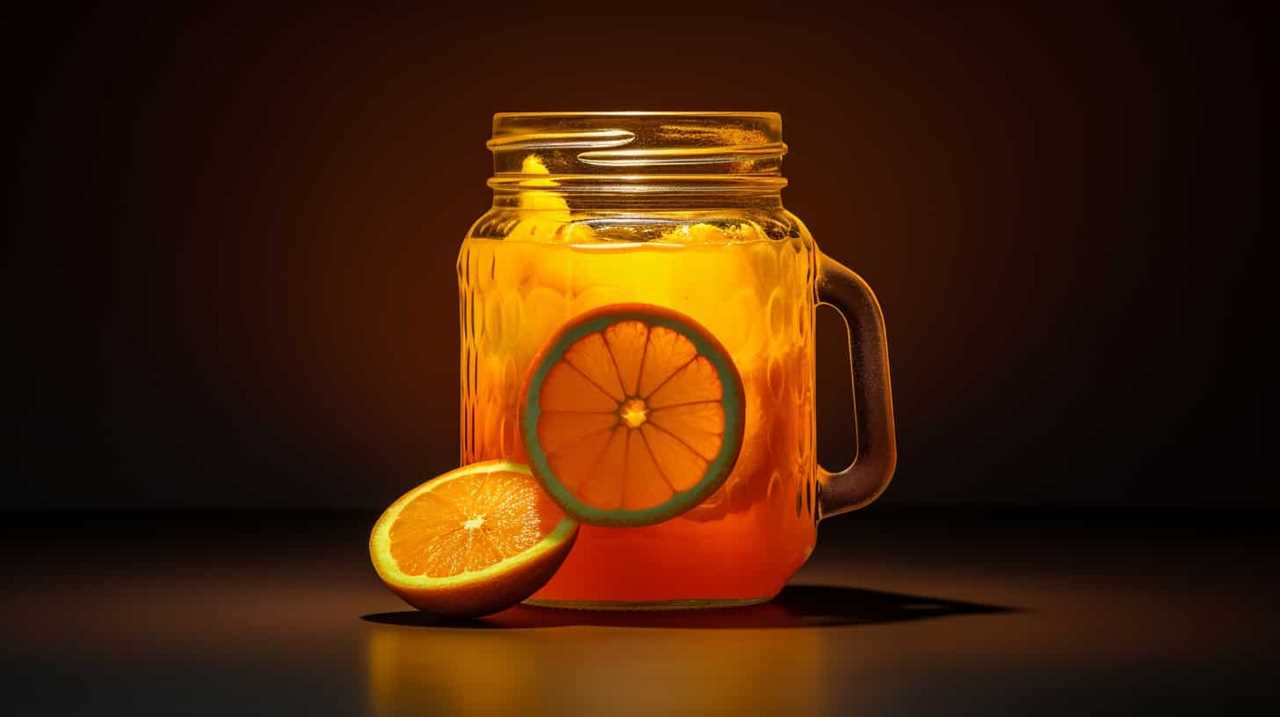
Is It Safe to Consume Orange Juice That Has Been Left Out at Room Temperature Overnight?
Left out orange juice may not be safe to drink as it can harbor harmful bacteria. Signs of spoiled orange juice include a sour smell, mold growth, and a change in color or taste.
Can Orange Juice Develop Harmful Bacteria if It’s Past Its Expiration Date but Still Looks and Smells Fine?
Orange juice can cause food poisoning if it develops harmful bacteria, even if it looks and smells fine. Signs of spoiled orange juice include a sour smell, mold growth, and a change in color or taste.
Does the Nutritional Value of Orange Juice Decrease as It Starts to Go Bad?
As orange juice goes bad, its nutritional value decreases. The longer it sits on the shelf, the more nutrients it loses. Signs of spoilage include a sour smell, off taste, and mold growth.
Conclusion
In conclusion, determining if orange juice is bad requires careful observation of color changes, strange smells, off taste, and texture changes. Just like a detective investigating a case, we must rely on our senses to detect any signs of spoilage.
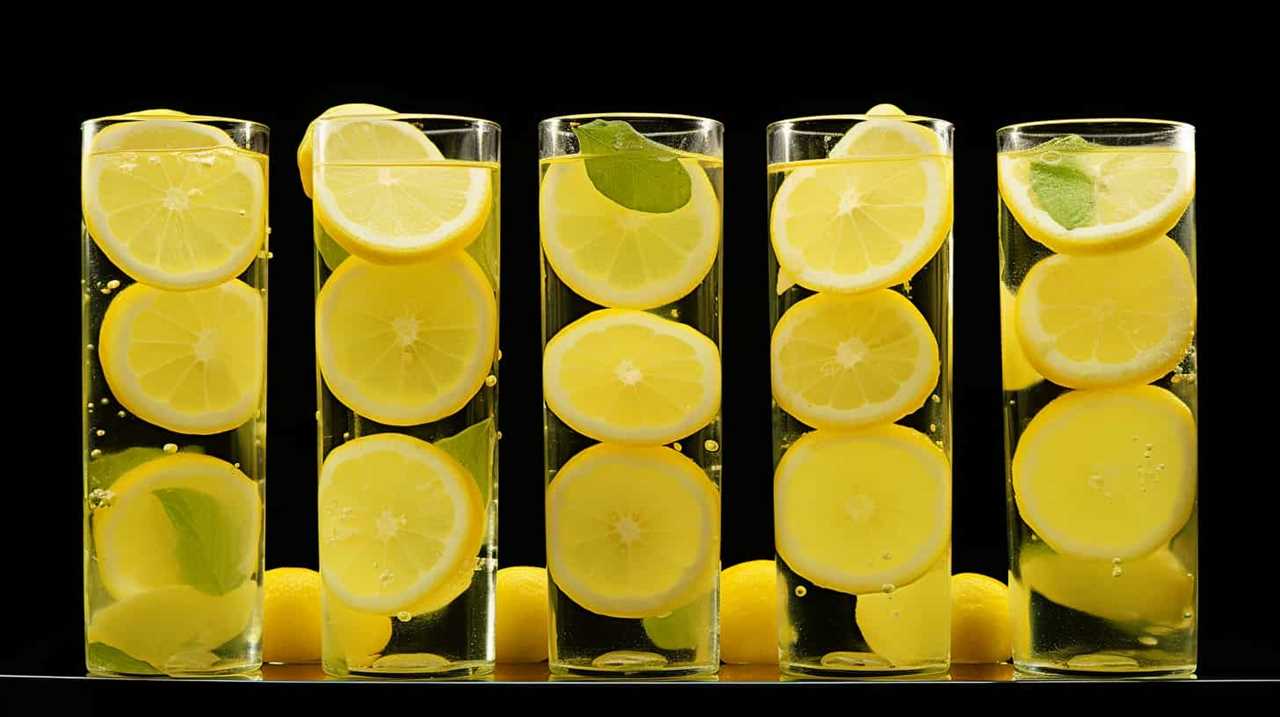
If we detect mold or growth in the orange juice, it’s a clear indication that it’s no longer safe to consume. By remaining vigilant and attuned to these indicators, we can ensure that our orange juice is always fresh and enjoyable.
Susannah expertise lies in researching and compiling evidence-based content on juicing, nutrition, and overall health. She is committed to ensuring that The Juicery World offers accurate, up-to-date, and trustworthy information to empower readers to take control of their health. Susannah’s goal is to inspire individuals to embrace juicing as a way to nourish their bodies and live their best lives.
-

 Vetted2 months ago
Vetted2 months ago15 Best Juices for Diabetics: Refreshing Options That Won’t Spike Your Blood Sugar
-

 Vetted2 months ago
Vetted2 months ago15 Best Decaf Coffee Options for Flavor Lovers Who Need a Caffeine Break
-

 Vetted2 months ago
Vetted2 months ago15 Best Espresso Ground Coffees to Elevate Your Morning Brew
-

 Vetted2 months ago
Vetted2 months ago15 Best K-Cup Coffee Pods for a Perfect Brew Every Time
-

 Vetted2 months ago
Vetted2 months ago15 Best Beans for Espresso: A Guide to Perfecting Your Brew
-

 Vetted2 months ago
Vetted2 months ago15 Best Inexpensive Espresso Machines That Brew Quality Coffee on a Budget
-

 Vetted2 months ago
Vetted2 months ago15 Best Kona Coffees to Savor the Rich Flavors of Hawaii
-

 Vetted2 months ago
Vetted2 months ago15 Best Cold Brew Coffees to Keep You Refreshed All Summer Long




